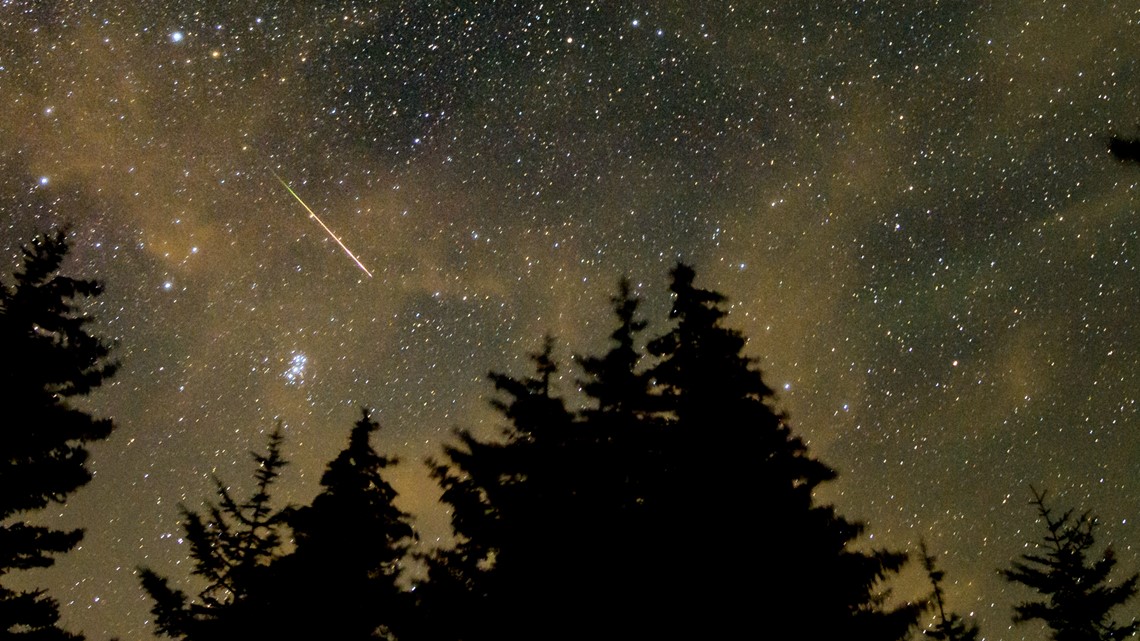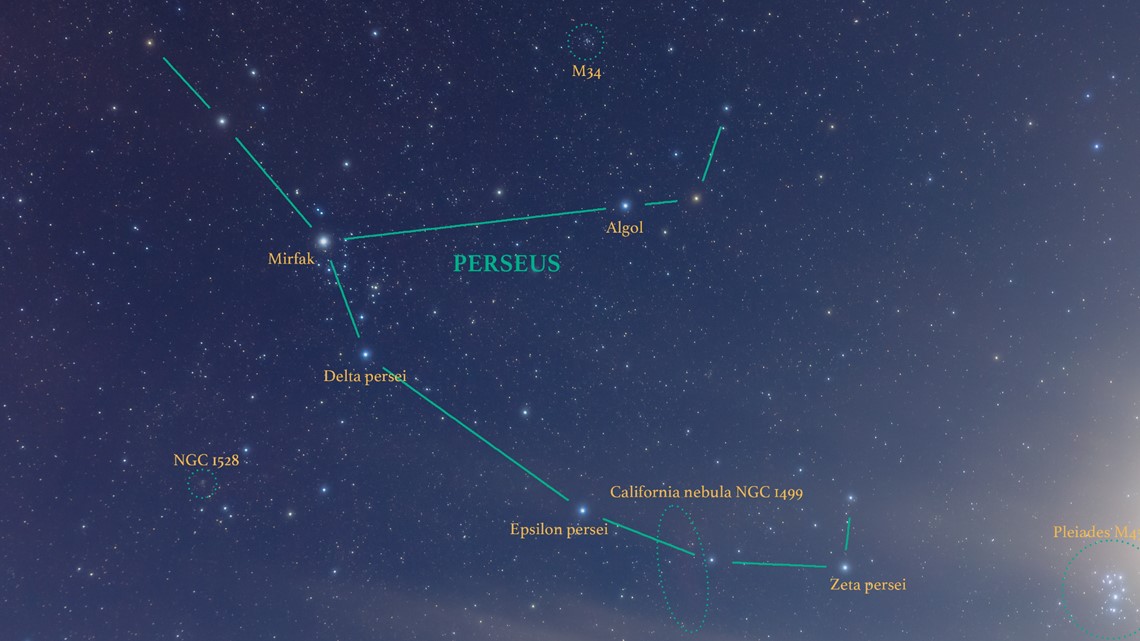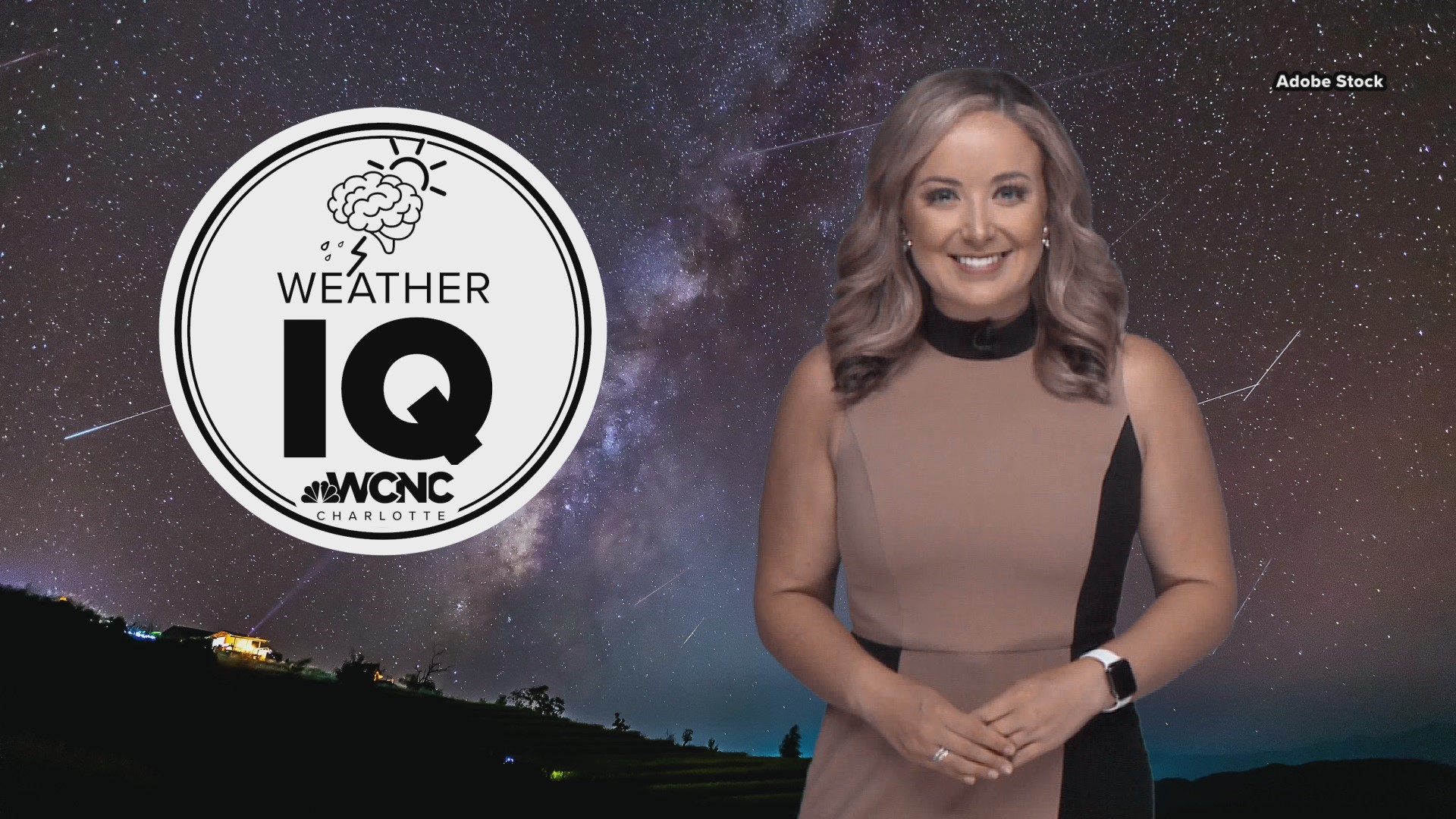MINNEAPOLIS — One of nature's best celestial shows is coming back this month, but a full moon might steal the show.
NASA says the Perseids have a peak of 50 to 100 meteors per hour and are known for occasional fireballs — larger and longer-lasting "explosions of light and color" that come from larger comet fragments.
The Perseids are typically active from mid-July to September, but this year they peak from Friday night to Saturday morning (Aug. 12-13). The meteors are best viewed in the hours before dawn, but they can appear as early as 10 p.m.
One problem: The full moon is on Thursday. Its bright light can outshine meteors and make all but the brightest impossible to see.
"The show's gonna be a bit muted, but still, there's enough bright meteors that you can still see enough activity by just facing away from the moon," said American Meteor Society editor Robert Lunsford.
While the Perseid meteor shower is typically considered the best meteor shower of the year, NASA says this may not be the year to make a special trip to see the celestial show — but if you find yourself out under the night sky during the peak, try taking a look.
After the peak, the Perseids will slow down. NASA says they'll begin to wane on Aug. 21 and completely stop by the start of September.


When can you watch the Perseid meteor shower?
Despite being active for weeks, the Perseids reach a crescendo in mid-August. The peak was Aug. 11 and Aug 12 in recent years, but the exact time of the peak gets later by about 6 hours each year.
"That's simply due to the fact that it takes the Earth 365 days and a quarter day, which is six hours, to complete its full revolution," Lunsford explained.
NASA and the American Meteor Society say you can watch the peak of the Perseids from Aug. 12 to Aug. 13 in 2022, but meteor activity from the shower will also be high in the nights before and after.
The best time to watch the Perseids is the early morning hours because the constellation Perseus -- the place in the sky the meteors will appear to originate from -- will be high in the night sky instead of close to the horizon.
"You can still see Perseid meteors as soon as it gets dark, but the numbers will be reduced," Lunsford said.


There's not much skywatchers can do about the moon, but Lunsford said facing away from it and avoiding city lights will help. EarthSky recommends watching for at least an hour since meteor showers are known for bursts and lulls of activity.
Where do the Perseids come from?
We see comets when Earth passes through a trail of space debris. For the Perseids, that debris comes from the Swift-Tuttle comet.
NASA says the comet takes 133 years to orbit the Sun and is 16 miles across. Astronomers discovered it in 1862 and realized it was the source of the Perseids a few years later.
So where does the name come from? Meteor showers are named after the point they appear to come from in the night sky — in this case, the constellation Perseus. This is known as the "radiant" and helps skywatchers know where to look.
When is the next big meteor shower?
If you decide not to wake up early for the Perseids this year, there's still some good news: Meteor season is just getting started. The next major one to watch is the Orionid meteor shower, which peaks on Oct. 21.
CHECK IT OUT: Top skywatching events of 2022 you don't want to miss

